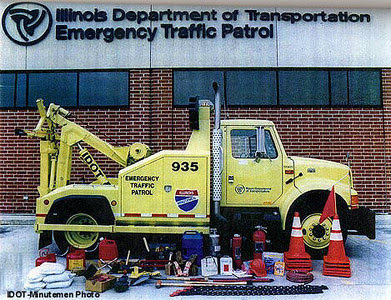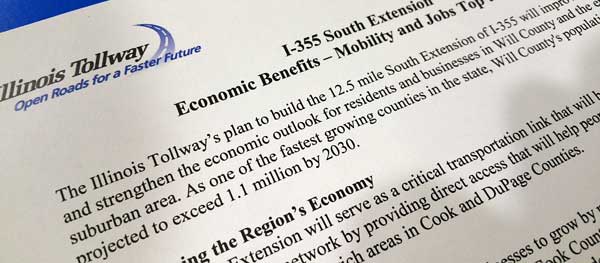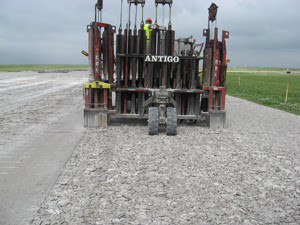Change management is fun, right?
As the leader of a nonprofit organization you’re well aware that failure to modernize is a major risk factor.
Managing change might seem slightly easier in the nonprofit world if you think of it in terms of building a highway. This analogy comes easily to me, as a communications consultant to nonprofits, as well as major highway projects.
Whether it’s a highway or a nonprofit organization, wouldn’t it be much easier to rebuild if you could just send your calls to voice mail and all the traffic to an alternate route?
But you can’t really do that. It’s essential to keep providing service even as you re-examine and fix everything. Impossible?
Keep the traffic flowing
In the nonprofit environment, organizational change closely resembles a highway reconstruction project. As users of the system, we hate the traffic jams but love the smooth highway that results.
Let’s look at the elements of a huge highway reconstruction project, keeping in mind how these elements are analogous to development and implementation of your new strategic plan.
1. Establish and Re-Establish the Need
Highway
The public will complain about the inconvenience and the cost.
“You added an hour to my commute.”
“Shouldn’t these billions of dollars be used to build schools?”
Difficult fact: If we don’t rebuild the 50-year-old highways, they will crumble, eventually leading to very unsafe conditions.
The need for the project must be sold and re-sold through constant public relations at every phase, explaining the consequences of inaction.
Nonprofit
You must constantly remind staff, leadership and donors why you are implementing a new plan. The communications drumbeat must be steady because people will complain that this is too expensive, too much of a hassle and too far away from our traditional, core mission.
2. Deconstruct the Old Ways
Highway
You can fill potholes every spring, and every few years you can lay a new surface on top of the highway, but eventually these patching jobs become ineffective. Eventually you have to completely tear apart the expressway, all the way down to bare dirt. I have seen this done.
Do we throw away what we dig up? No. We use a machine called a rubblizer that loudly and violently obliterates the existing pavement, chopping it into small pieces that will be reused in the new highway:
In other words, the new highway will be largely built of the pieces from the old highway, but it will be newer, safer, more efficient and offer greater capacity.
Nonprofit
As your nonprofit evolves, elements from your stellar history will be clearly evident in your continuing work. Core values will never change, but will be adapted to developing needs, new conditions and community partners that didn’t exist in your early years.
3. Maintenance of Traffic
Highway
When you rebuild a highway that serves hundreds of thousands of cars, buses and trucks daily you simply cannot close it down. The construction would go much faster and it would be much safer for the workers if you could close it down, but doing so would create a chaotic traffic situation citywide.
So, you create a Maintenance of Traffic Plan. For example, on a 12-lane highway you might close three lanes in each direction for reconstruction while keeping the other three lanes in each direction open to traffic.
That’s a 50 percent reduction in capacity. The MOT Plan provides for alternate routes (that in some cases must be improved the year before the big project); alternate modes of transportation (like longer and more frequent public transit trains); clear signage; flaggers; and constant informational updates to the media.
MOT is really complicated and really important.
When the original three lanes have been rebuilt, everything switches. Traffic will now flow on the new lanes while the other three lanes in each direction are rebuilt.
Nonprofit
While you are rebuilding, you also will continue to provide services, manage events and speak out on issues.
This will be a challenge because considerable resources are allocated to development and implementation of the new plan. Your organization will have to stretch in order to maintain operations. That won’t be convenient and, like a highway project where cars are whizzing by at 65 mph only a few feet away from construction workers, it’s scary and unsettling.
4. Incident Management

If there’s a problem in the construction zone, an incident management team responds immediately, with the goal of keeping traffic flowing.
Highway
During a major highway project where lanes are closed and entrance/exit ramps are reconfigured, it becomes very difficult for emergency vehicles to respond to crashes.
In addition, the project can be thrown off track by severe weather, delays in delivery of equipment and supplies, etc.
An Incident Management Plan (I’ve helped prepare a few of these) ensures the ability to respond to all of these problems.
Nonprofit
During implementation of the plan, you will — as always — be attuned to what’s happening in the communities and constituents you serve.
When new issues suddenly arise, you’ll be prepared to respond effectively with a new perspective on your organizational goals.
Conclusion
Change management requires a communications plan. In this case, my way is the highway.
– Accept the fact that you must constantly re-establish the value of your organization’s new path.
– Whenever talking about the new Strategic Plan, ALWAYS include the plans for maintenance of operations and being ready to respond to situations where we are needed.
– Or to put it another way, you are modernizing the organization with deep reverence to the past, unwavering attention to the present, readiness to respond when the need arises and great hope for the future.
I don’t know about you, but right now I feel like taking a nice ride on a newly repaved and redesigned highway. Hop in, let’s go.
And let me know if you’d like to talk about change management at your nonprofit.




